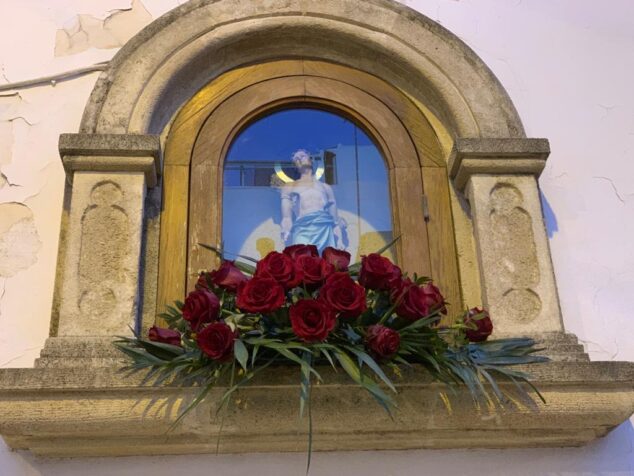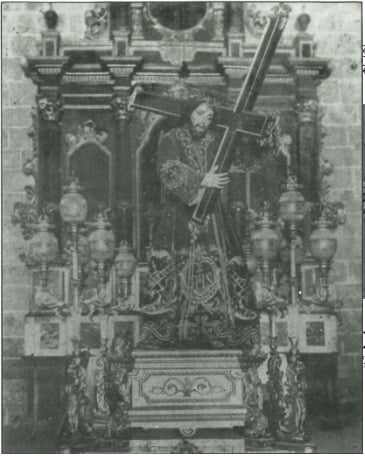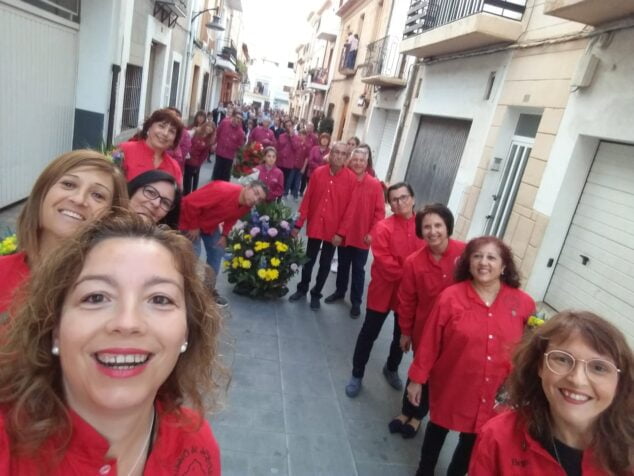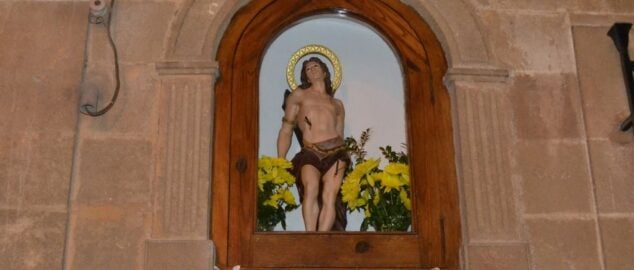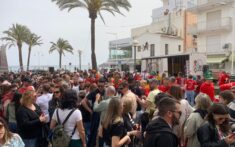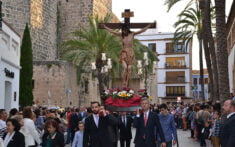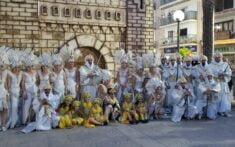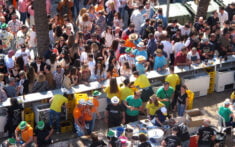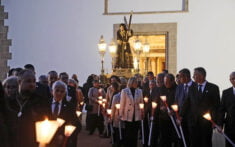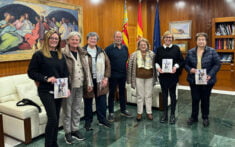The devotion to the saints appeared, centuries ago, before the appearance of great plagues and medieval epidemics. In Xàbia, San Sebastián (or Sant Sebastià) is the patron saint of the municipality. The origin of this title is shrouded in legend and from there it currently has a street and an altar dedicated to this old patron saint of the town.
For some it is due to the fact that centuries ago it freed the Javienses from the scourge of a plague epidemic. For others, San Sebastián is the patron saint of stonecutters, and given the tradition of this population in the artisan work of stone, it seems logical that he was granted that title.
Next you have an index with all the points that we are going to deal with.
History
Undoubtedly, one of the oldest festivals in Xàbia may be those of Sant Sebastià. Saint Sebastian, a crossbowman in the army of the Roman Emperor Diocletian, was a Christian martyr who died riddled with arrows around the year 303. A century later, a legend attributed several martyrdoms and patronage to this saint.
But the best known patronage and for which his dedication quickly spread throughout the Mediterranean was that of a lawyer against the plague. From there the local tradition of venerating the saint who was shot was born. According to some documents, this devotion dates back to the end of the XNUMXth century when an epidemic of plague ravaged the Mediterranean coast.
The Valencian Council of that time prohibited, in 1450, the entrance to the city of Valencia to any person who came from towns attacked and decimated by the pestilence, among which was Xàbia. In later documents from 1501, the town continued to be called a place of plague.
Given this fact, as happened with Jesús Nazareno, the inhabitants of Xàbia entrusted themselves to San Sebastián as protection. But the people also took refuge in the protection of other saints known as 'healers' as were San Cristóbal or San Roque.
The town of Xàbia was welcomed under the official patronage of Saint San Sebastián, but as the epidemic attacks did not diminish, the Juries decreed in 1597 that the day of San Cristóbal should also be a holiday, to demand more effective religious protection.
Although the plague epidemics subsided during the 20th century, popular devotion continued to invoke Sant Sebastià as the patron saint of Xàbia, celebrating the festival on January XNUMX and maintaining the cult in the Hermitage of Rebaldí.
Veneration of Saint Sebastian
At that time it was customary to venerate Saint Sebastian in the chapels located near the portals of the walled cities and towns, so that in this way he would be protected from the entrance.
Of these small chapels, the niche of Sant Sebastià is still preserved in Xàbia, located on Calle Mayor, near the Portal de la Herrería, and further up the niche of San Cristóbal. The story goes that the Portal del Clot was guarded by the old altar of San Sebastián.
Later, as the municipality grew, a street was dedicated to the patron. This is located in the historic center of Xàbia, just behind the Post Office.
La Ermita
La Hermitage to San SebastianFormerly, it was located in the area of El Rebaldí. Now, it is located inside a large estate known as El Rebaldí located next to Camí Cabanes. The hermitage was integrated into the current house while a new temple was built next to it, becoming private property.
In this way, in 1993 the construction of a new hermitage to the patron began on land ceded in the 1960s by the Benimeli family (a landowning family from Jávea), but the works were stopped for years. In July 2015 the works on the hermitage were finished and it was blessed by Archbishop Cardenal Cañizares.
Loss of faith and parties to San Sebastián
The faith and devotion of the people of Xàbia to San Sebastián was lost at the end of the XNUMXth century due to the appearance of new epidemic pathologies. Cholera arrived coinciding with the gift, by the Duke of Medinaceli, of an image of Jesús Nazareno. At that time, the residents of Xàbia entrusted themselves to the Nazarene to protect the town from the new epidemic, and he did it successfully.
Apparently, according to the writings, during the years of cholera -1835, 1854, 1856 and 1884- Xàbia got rid of contagion and the residents took down the image of Jesús Nazareno from the Hermitage and deposited it in front of the San Sebastián chapel, before the ancient wooden altar, rich in decorations. Since then, it seems that the festival of San Sebastián was lost, with Jesús Nazareno taking the biggest celebration.
Brotherhood
According to the pastoral visit of Juan de Ribera, in 1580, it is clear that there was already a Brotherhood of San Sebastián in Xàbia, founded in time immemorial. This brotherhood, together with that of the Desamparados, was in charge of preparing and giving soil to the dead due to contagious disease (plague). After it disappeared, in 1992 the new and current Comissió de Sant Sebastià was formally constituted.
Resume parties and worship
Once the new Commission was created, the project was launched to make an altarpiece in rough stone that was devised in the 40s by the master tosquero from Xàbia, Vicent Bisquert (Vicent de Gràcia).
The parish of San Bartolomé dedicates one of its side altars to the patron saint and, although it may seem anachronistic given his ownership as patron saint of the municipality, its restoration was one of the latest.
In the 1993 festival program, the recently created festival commission explained this fact: "After ten years trying to recover the festival, we can begin to think about rebuilding its altar, which, in the parish, is the only one left to place. Due to the irony of things, San Bartolomé, head of the altar of the parish and San Sebastián, patron saint of Xàbia, have run out of altarpieces in which to be venerated", thus requesting the collaboration of all the residents to be able to carry out this project. The collective collected 750.000 pesetas in one year.
Today it is located in front of the side door of the temple, the Puerta de San Gil, the entrance that is in front of the Town hall, "San Sebastián thus watched over the fonts of blessed water -water was then considered the most contagious element- and the well located under it, in the crypt, and which supplied the needs of worship and siege".
When is celebrated?
The day of San Sebastián is celebrated every January 20. Until a few years ago, the festival on this day in honor of the patron saint of Xàbia was limited to celebrating a mass and throwing firecrackers. However, about 30 years ago, in the mid-90s, the residents of Xàbia wanted to give it more prominence and promoted more events in this small celebration.
Events and programming of the Sant Sebastià festivities
Little by little, the festivities in honor of San Sebastián became larger with the inclusion of events for the little ones, parades to visit the niches and offer offerings to the saint and sports activities, thus extending the anniversary by a few days.
It was in 2012 when the program of events for the festivities in honor of Sant Sebastià gained more body. Through the impulse of the ACT (Bullfighting Cultural Association of Xàbia), the festivals of San Sebastián introduced the traditional release of heifers. The ACT together with the Festival Commission wanted to recover an old custom; that the bulls returned to the historic center: in the Plaza de Iglesia and in the Plaça de Baix, as was done in the past for the Fogueres festivities.
The full program of events can be found at this link.
Bibliography
- Arxiu Municipal Xàbia
- Antonio Espinos
- Bullfighting Cultural Association of Xàbia (ACT)
- Sant Sebastià Festival Committee



